While there are imposing monuments and serene cemeteries marking the contributions of Canadian soldiers during two world wars throughout Europe, keen-eyed visitors may also spy less subtle traces of their impact across the continent. One such sign sits unassumingly on the south bank of the Orne River at the corner of Montalivet and Rue Rosa Parks in Caen, France: Pont Capitaine George-Gilbert-Reynolds.
The tram bridge is in the port city in northern France’s Normandy region, located about 20 kilometres south of where some 14,000 Canadian troops landed at Juno Beach on D-Day. It was dedicated to Captain Reynolds, second-in-command of the 23rd Field Company, Royal Canadian Engineers (RCE), in 2019 during events commemorating the 75th anniversary of the invasion that launched the liberation of Europe. Reynolds was killed in action on July 23, 1944, in the city’s Vaucelles district.
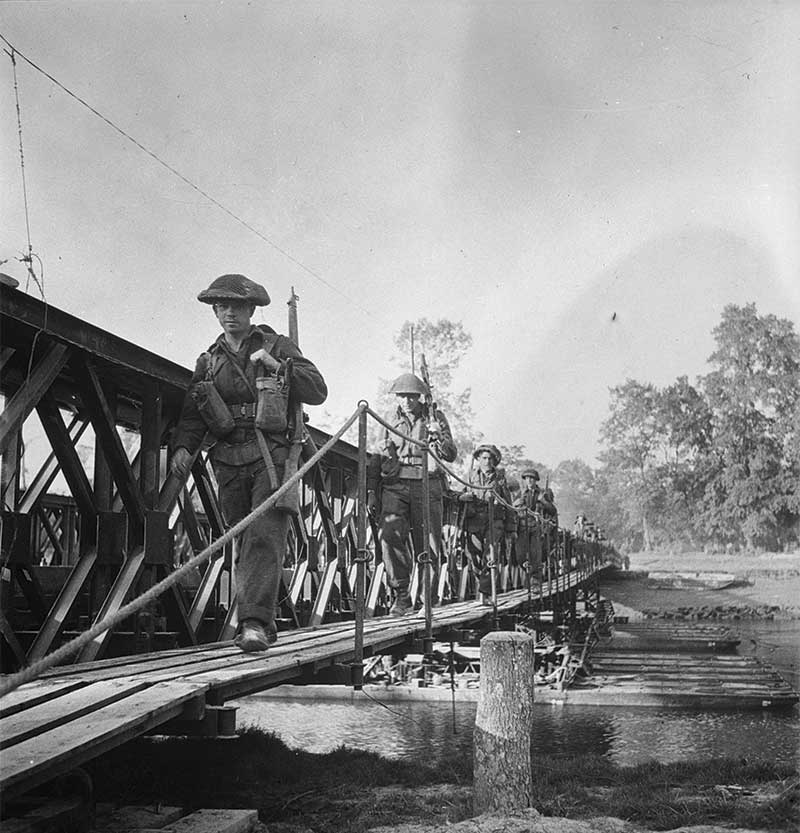
“There is a profound relationship between the people of this region who suffered so grievously and the Canadian soldiers who paid such a terrible price in freeing France,” said MP Charlie Angus, who attended the ceremony with about a dozen then-active combat engineers and 23rd Field Company veteran Frank Krepp.
“In Normandy, young Canadians confronted the heart of darkness and they built a better world,” continued Angus. “I am inspired by the determination, dignity and steadfastness of these vets who gave so much for the principles of freedom and dignity.”
Notably, it was not the first time a bridge in Caen had been named in honour of Captain Reynolds’ inspirational contributions.
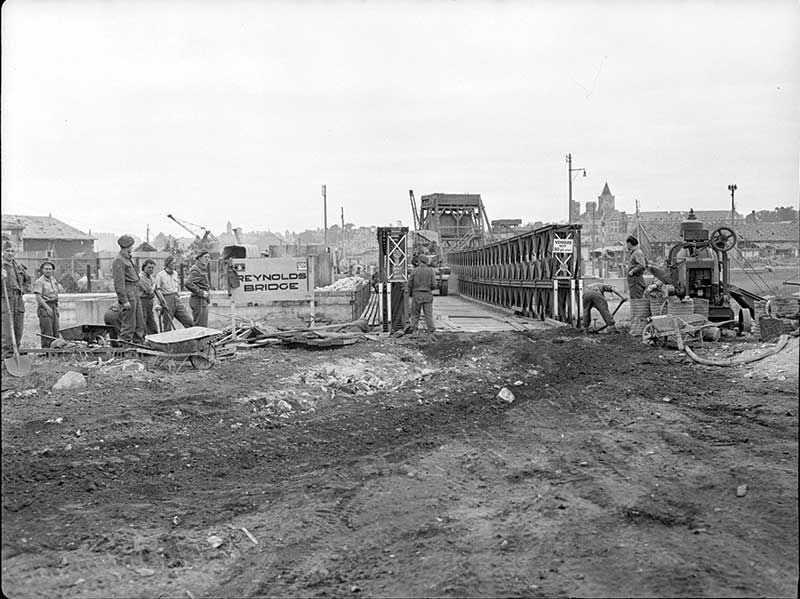
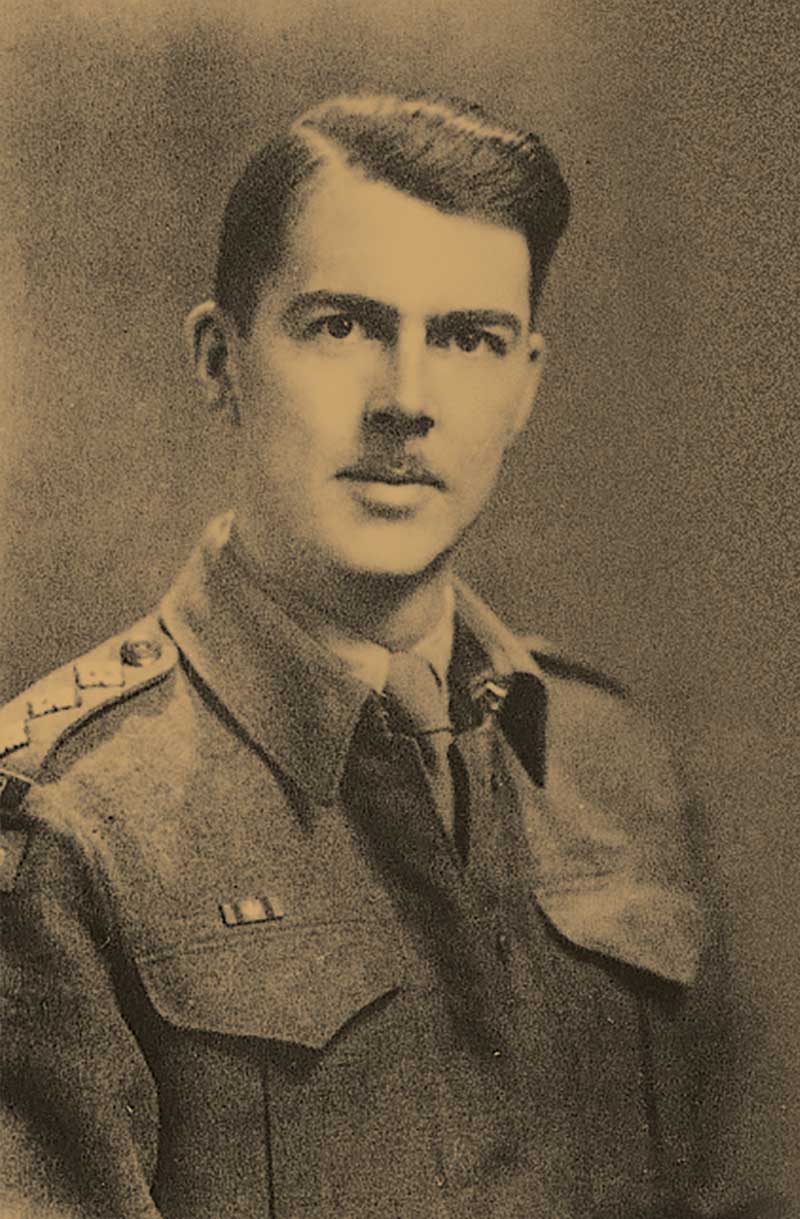
The role of combat engineers in the liberation of Europe is often overshadowed by the heroic actions of aerial aces, the sacrifices of high seas sailors or the herculean efforts of infantrymen. However, the builders, known as sappers, are military specialists in the field fortification work that the whole enterprise relied on. During the Second World War, they provided battle maps, repaired and built roads and airfields, cleared mines, roadblocks and other debris, filled in craters and anti-tank ditches and built headquarters, barracks, hospitals and bridges. From 1943-45, engineers facilitated the advance—often in the face of enemy fire—alongside other combat troops to open routes for tanks and infantry.
It’s lesser-known stories such as this and, naturally, much more heralded reports, too, that Liberation Route Europe (LRE), a transnational memorial trail that connects Second World War sites across Europe, highlights in its work. A certified Cultural Route of the Council of Europe, LRE connects people, places and events that mark the continent’s liberation during the conflict. The organization is developing a network of trails throughout Europe that trace the Allied advance across some 10,000 kilometres. Its website and a new mobile app feature symbolic markers called “Vectors of Memory,” which visitors can use to connect with well-known events and personal stories and experiences. The five bridges the 23rd constructed in Caen in July 1944, are a crucial connection to the past, the liberation and the largely unheralded role of the builders in the battle.
“There is a profound relationship between the people of this region and the Canadian soldiers who paid such a terrible price in freeing France.”

George Gilbert Reynolds was born in Winnipeg just months before the outbreak of the Great War, on March 21, 1914. He attended Kelvin Technical School, a high school just south of the Assiniboine River in the city’s Crescentwood neighbourhood. While the original castle-like facility was replaced in 1964, the school still exists today at the same location—now a historic site of Manitoba. Reynolds is one of hundreds of former students and teachers killed in the world wars. The school’s motto: Courage, truth, right.
Before attending the Royal Military College and Queen’s University in Kingston, Ont., during the 1930s, Reynolds had studied pre-engineering at the University of Manitoba. “This would seem to account for his ability to assimilate engineering subjects with greater ease than some,” noted a yearbook entry from his Kingston days. During five years at university, the nearly six-foot, 180-pound Reynolds, boasting the handsomeness of a young Tom Selleck, notably played in all inter-company games, as well as tennis. He graduated with a degree in civil engineering in 1938.
Reynolds enlisted at age 25 on Aug. 31, 1939, the day before Germany invaded Poland. He had spent the year prior working for the Hydro-Electric Power Commission of Ontario in Bala, Hudson and Toronto’s Leaside neighbourhood. He married Grace Eleanor Cowdry in December 1940 and went overseas briefly from January to April 1942. Back in Canada, Reynolds was promoted to captain and took the commander’s course. His May 1943 Student Officers Report Form stated: “Keen and aggressive. Excellent officer with good capabilities.”
In February 1944, he bid his wife of three years goodbye and returned overseas.
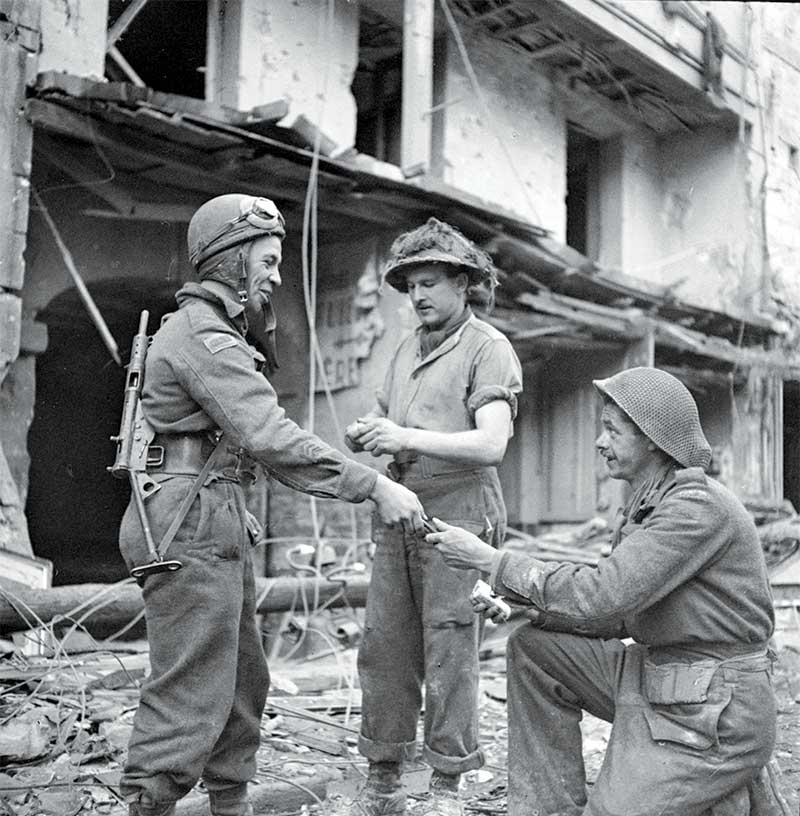
Caen is considered the political, economic and cultural centre of northern France. Located just south of the English Channel, the city is renowned for its historic architecture. Much of it was built during the reign of William the Conqueror in the second half of the second century, including the imposing Château de Caen, a castle and fortifications on high ground near the city centre.
Some 70 per cent of Caen was destroyed in early July 1944 as Allied forces bombed the city after their plan to capture it on D-Day was delayed by weeks in the face of tenacious German resistance. Less than half of its 60,000 inhabitants remained in the city at the time, half of those living in temporary shelters or nearby caves.
When the first British and Canadian troops arrived in the city on July 9, many of Caen’s narrow streets were blocked, the stone buildings lining them having crumbled into mounds of rubble. Some 1,500 civilians were wounded; 3,000 were dead, including hundreds buried amid the debris. The way forward needed to be cleared.
Enter the 23rd and Reynolds. Like him, much of the company was also from Winnipeg. They landed on Juno Beach on July 11, the shoreline still chockablock with offloading ships, the waves lapping the shore with debris and bodies not yet recovered from weeks earlier. They quickly moved to the outskirts of Caen and began clearing a thoroughfare through the city.
The builders, known as sappers, are military specialists in the field fortification work that the whole enterprise relied on.
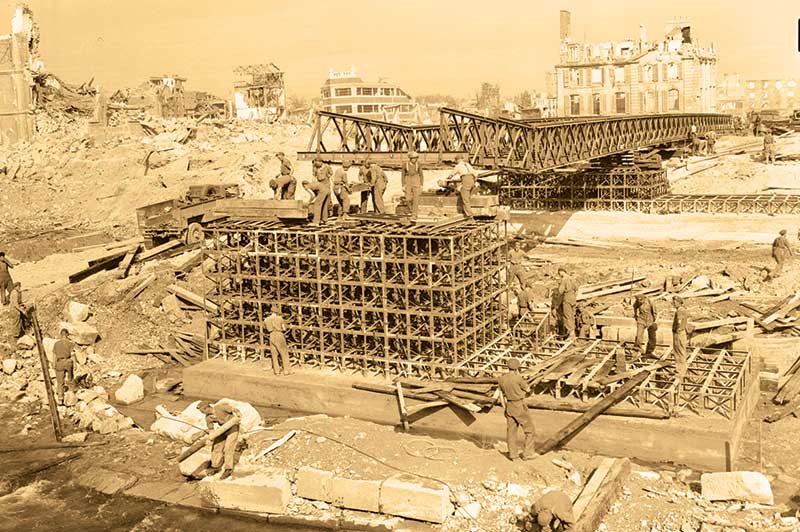
The 23rd destroyed obstacles, bulldozed rubble, cleared mines and filled potholes, creating a route through the heart of Caen, all the while wise to booby traps and sniper fire. The company was regularly under fire as it worked its way slightly southeast toward the Orne River.
They cleared a path they dubbed “Andy’s Alley,” which, depending on the source, was either named in honour of General Andrew McNaughton, also a civil engineer, or Lieutenant William A.B. Anderson, a general staff officer at the time. The route would later be named Avenue Triomphale, then Avenue du Six Juin.
Once at the river, the 23rd started building five Bailey bridges across the Orne. The Bailey, a prefabricated truss bridge, had been developed by the British near the start of the war and was used extensively throughout the conflict in such situations. Its modular design was light enough to be transported by truck and lifted into place by hand, but sturdy enough to carry the weight of a tank.
Soon, Monty’s, Winston and Churchill bridges, along with a fourth unnamed one, were transporting troops and tanks over the Orne, driving the Germans from France. Meanwhile, the company was set to begin work on a fifth bridge, a 50-metre Bailey, to connect the city’s Vendeuvre and Hamelin wharves, when they got word that their captain had been killed.
To the southwest, along the banks of the Orne, Reynolds had been hit by shrapnel from a PIAT grenade, a shoulder-fired British anti-tank device—ironically, Canadian army officers had ranked it their top weapon during the war. Reynolds’ Service and Casualty Form summarized his death dismayingly: “killed by a flying fragment while observing a demolition at 1500 hrs this 23 July 44.”
At 2 a.m. on July 26, the fifth Bailey bridge was taking traffic. The 23rd had cleared a way through the levelled city and built five crossings on the Orne in a little more than two weeks. The engineers christened the last bridge in the name of their fallen captain: Reynolds’ Bridge.
Soon, as an article in The Winnipeg Tribune put it, the link was facilitating “heavy tanks to push on and crush Nazi resistance south and east of the city.” A senior sapper of the 23rd sent a picture of the bridge to Reynolds’ parents back in Winnipeg. In it, a Sherman tank of the British 7th Armoured Division, the renowned “Desert Rats,” is crossing the Orne en route to battle.
The day the photo was taken, a column of tanks crossed the river for hours.
The 23rd followed across in support of the 4th Canadian (Armoured) Division. After the Germans were chased from the Falaise Pocket south of Caen, the Canadians moved to the northeast to traverse the Seine River in late August.
At Pont-de-l’Arche, about halfway between Paris and Le Havre, the sappers joined the assault crossing of the river. They had had considerable training in England on British storm boats, which, supported by artillery and mortar fire, they used to ferry infantry troops of the 4th during the operation. The east bank secured, the 23rd built a 33-metre Bailey bridge over the Seine in less than a day.
The company went on to support the Allied advance into Belgium and the Netherlands. In the latter, they were instrumental in the nighttime evacuation of the encircled and weakened British 1st Airborne Division on the Lower Rhine River.
The bridges, however, stand testament to the critical contributions of the 23rd Field Company, RCE. The Pont Capitaine George-Gilbert-Reynolds in Caen is a modern-day memorial linking to their story and their role in the liberation of Europe.
The bridge crosses the Orne in nearly the same place Reynolds’ Bridge did in 1944. And while it may be new, it harkens the sentiment expressed in The Winnipeg Tribune article sharing news of its predecessor’s naming: “In Normandy today stands a memorial to a Winnipeg officer—built by himself in the midst of battle, that the battle might be won.”
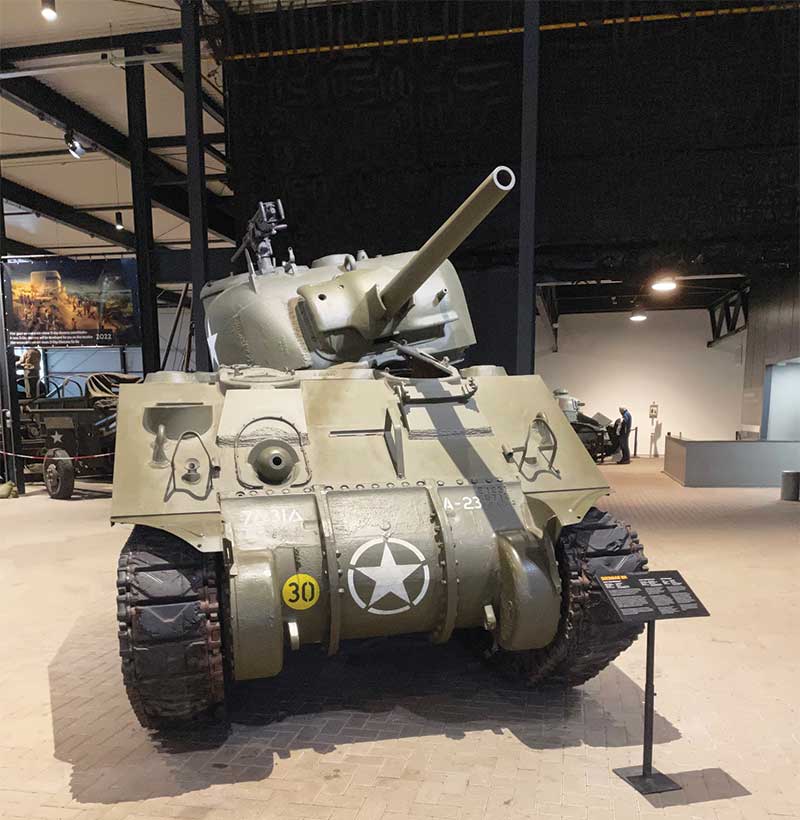
Liberation way
Liberation Route Europe is a network of Second World War historic sites, museums and more throughout the continent that help visitors connect to the conflict in greater detail through symbolic markers (“Vectors of Memory”), its website (www.liberationroute.com) and a new mobile app. Here’s a small selection of highlight locations.
British Normandy Memorial Located near Ver-sur-Mer, France,
this site, which opened in June 2021, records the names of 22,442 servicemen and servicewomen under British command who died on D-Day and during the Battle of Normandy in 1944.
www.britishnormandymemorial.org
Juno Beach Centre Renowned as Canada’s Second World War museum, the 21-year-old cultural centre in
Courseulles-sur-Mer, France, is steps from the notorious shoreline and boasts outstanding permanent and temporary exhibits.
www.junobeach.org
Mons Memorial Museum In central Mons, Belgium, this museum includes First and Second World War artifacts from the city’s collection that explore the relationship between civilians and the military. en.monsmemorialmuseum.mons.be
Jack’s Wood/Bastogne War Museum Explore the foxholes and history of the Battle of the Bulge in the Ardennes Forest near Foy, Belgium. Nearby, in Bastogne, delve into compelling interactive exhibits about the region’s Second World War history. www.bastognewarmuseum.be
Overloon War Museum This centre in Overloon, Netherlands, boasts an incredible collection of more than 100 Second World War vehicles and planes, including 2,000 pieces of wreckage from a crashed Lancaster bomber laid out in the aircraft’s silhouette. www.oorlogsmuseum.nl
Freedom Museum This facility in Groesbeek, Netherlands, focuses on cross-border, multi-perspective WW II history in the context of the 20th century and current events. www.freedommuseum.com
Groesbeek Canadian War Cemetery This site near Nijmegen holds the largest number of Canadian war dead in the Netherlands—2,338 graves—and is also the largest Commonwealth war cemetery in the country.
Fletcher Hotel Erica After Nijmegen was bombed in early 1944, this lodging in Berg en Dal, Netherlands, became a refuge for the homeless. It also has a secret entrance to a basement space that may have been used to hide people. www.hotelerica.nl/en
Advertisement












